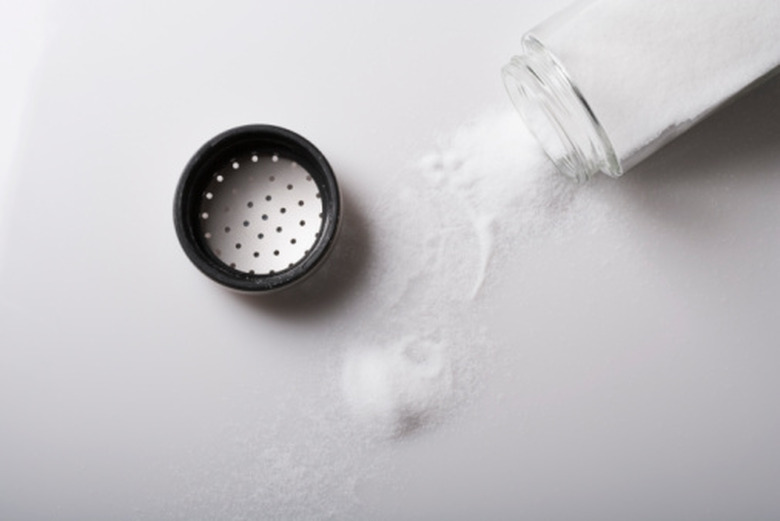How To Determine If Salts Are Acidic Or Basic
Reactions between acids and bases produce salts. Hydrochloric acid, or HCl, for example, reacts with sodium hydroxide, or NaOH, to produce sodium chloride, NaCl, also known as table salt. When dissolved in pure water, some salts themselves exhibit acidic or basic character. Understanding this phenomenon requires a knowledge of acids, bases and pH. In pure water, a small percentage of the molecules undergo a process known as dissociation, in which the water molecule, H2O, splits into two charged atoms called ions–in this case, H+ and OH-. The H+ then combines with another water molecule to make H3O+. In acidic solutions, H3O+ ions outnumber OH- ions. In basic solutions, OH- ions outnumber H3O+ ions. Neutral solutions, such as pure water, contain equal quantities of H3O+ and OH- ions. The pH of a solution reflects the concentration of H3O+ ions. A pH less than 7 indicates an acidic solution, a pH greater than 7 indicates a basic solution, and a pH of 7 indicates a neutral solution.
Determining whether a salt exhibits acidic or basic character, then, requires dissolving the salt in water and measuring the pH of the resulting solution. Acidic salts make acidic solutions and basic salts make basic solutions.
Step 1
Fill an 8-ounce measuring cup to exactly 8 ounces with distilled water, and dissolve 1 tbsp. of the salt under investigation to the distilled water and stir until dissolved.
Step 2
Dip a pH test strip into the cup containing the dissolved salt.
Step 3
Compare the color of the test strip to the color-coded pH chart supplied with the pH test paper. Typically, shades of red indicate an acidic solution, shades of green or blue indicate basic solutions and orange indicates a neutral solution.
Things Needed
- 8-ounce measuring cup
- Distilled water
- Salt
- pH test strips
TL;DR (Too Long; Didn't Read)
pH test strips are usually available at swimming pool supply stores. If pH test strips are unavailable, then see the Resources section for instructions on making your own pH indicator solution from red cabbage.
Warning
Both strongly acidic and strongly basic solutions are corrosive to tissue. The use of rubber gloves and safety goggles is strongly recommended when working with chemicals.
Cite This Article
MLA
Brubaker, Jack. "How To Determine If Salts Are Acidic Or Basic" sciencing.com, https://www.sciencing.com/determine-salts-acidic-basic-8051558/. 24 April 2017.
APA
Brubaker, Jack. (2017, April 24). How To Determine If Salts Are Acidic Or Basic. sciencing.com. Retrieved from https://www.sciencing.com/determine-salts-acidic-basic-8051558/
Chicago
Brubaker, Jack. How To Determine If Salts Are Acidic Or Basic last modified March 24, 2022. https://www.sciencing.com/determine-salts-acidic-basic-8051558/
